Common Metrc Errors for Providers
This guide has been created by the Cannabis and Alcohol Regulation Division (the department) to address the commons issues/errors that providers are currently making with respect to their Metrc account.
Addressing these issues in a proactive manner can assist in with time, effort, and finances for providers with respect to these errors.
Common Metrc Mistakes
By addressing these common mistakes, a provider can save time, effort, and money in the execution of their business operations.
- There are certain Item Categories that require the provider to select a pre-existing strain and enter relevant information.
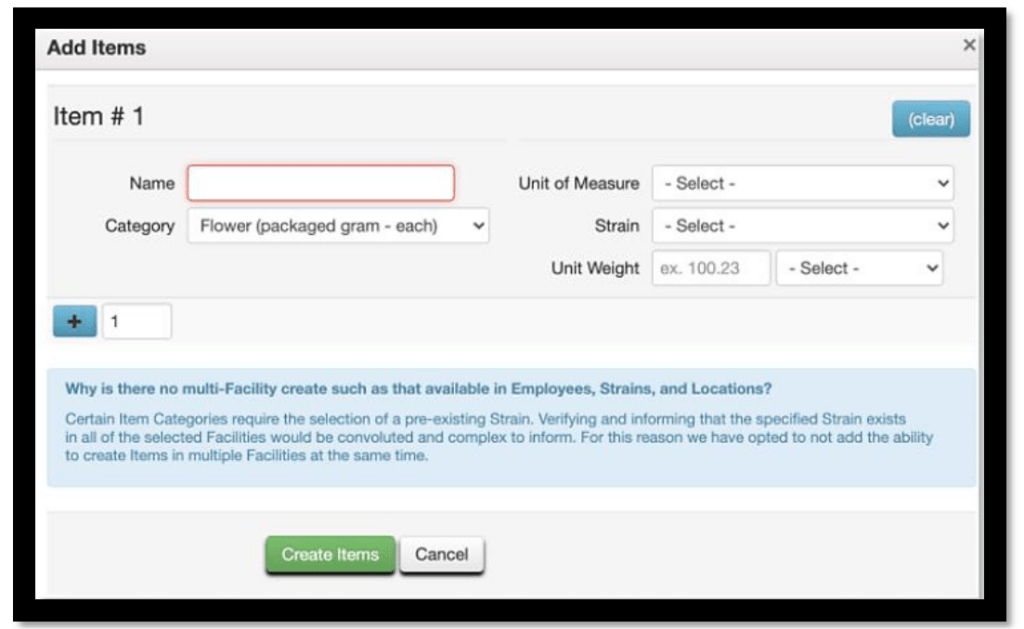
- It is strongly recommended to use proper naming conventions at the very beginning stages.
- Remain consistent with these naming conventions to avoid confusion and disruption of business operations.

- Every provider requires a certain type(s) of Metrc tag to operate.
- Providers should ensure they always have a sufficient supply of tags.
NOTE: When Metrc tags arrive, be sure to mark them as received in Metrc.
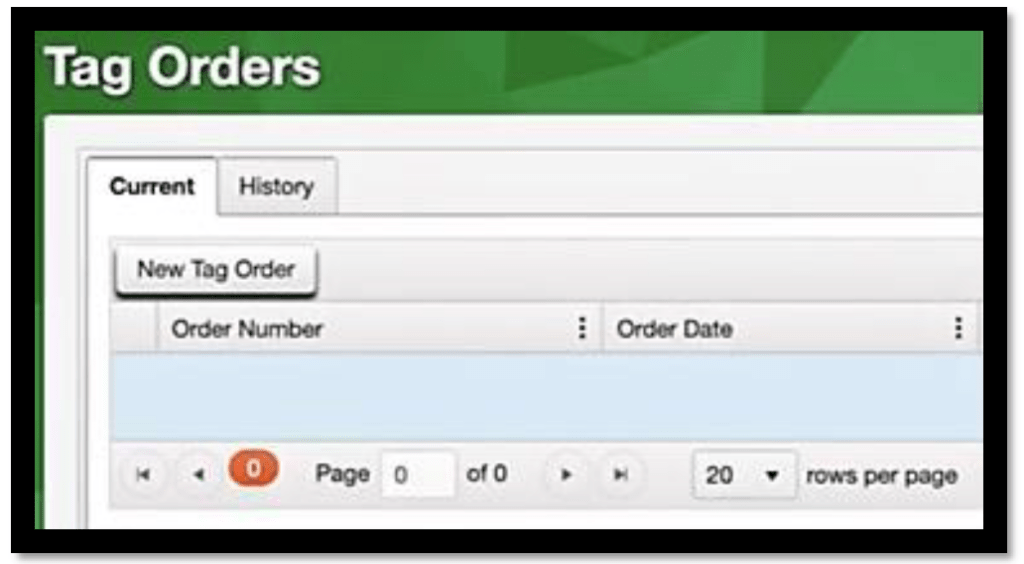
- Providers may create transfers up to 24 hours before the time of actual departure.
- Voiding an outgoing transfer after it has left its departure location results in its cancellation. All the associated packages are then returned to the originating provider’s inventory.
- Voiding an outgoing transfer after it has left its departure location may result in the provider being issued a deficiency. Per Montana Administrative Rule 42.39.413 (5): the transport manifest may not be voided or changed after leaving the departure location.

- It is ill-advised to accept a transfer before ensuring the manifest matches what is in the physical packages as there could be missing and/or damaged product(s).
- Providers should confirm/account for all inventory in the transfer before accepting it and entering it into their Metrc.
- If the inventory’s contents do not match the manifest, the provider may reject all of the inventory contained in the manifest or a portion of the inventory.
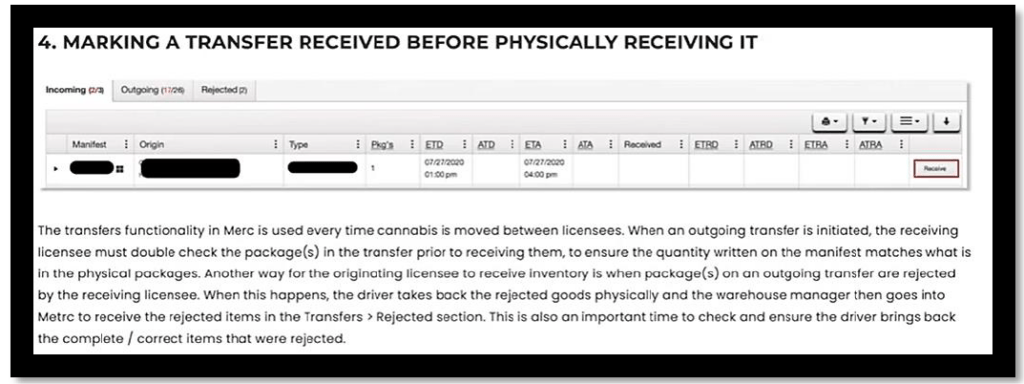
- Sample packages are created directly in Metrc. Providers will select this by choosing the Submit for Testing button at the times the samples are going to be received by a licensed testing lab for testing.
- Packages that are then created from the Source Package with test results inherit the test result unless the Production Batch box is checked.
- Checking the Production Batch box on an existing package that has already been tested and passed will reset the test results back to Not Submitted on the package.
- If a provider makes this error: Discontinue the package, and then create it again.
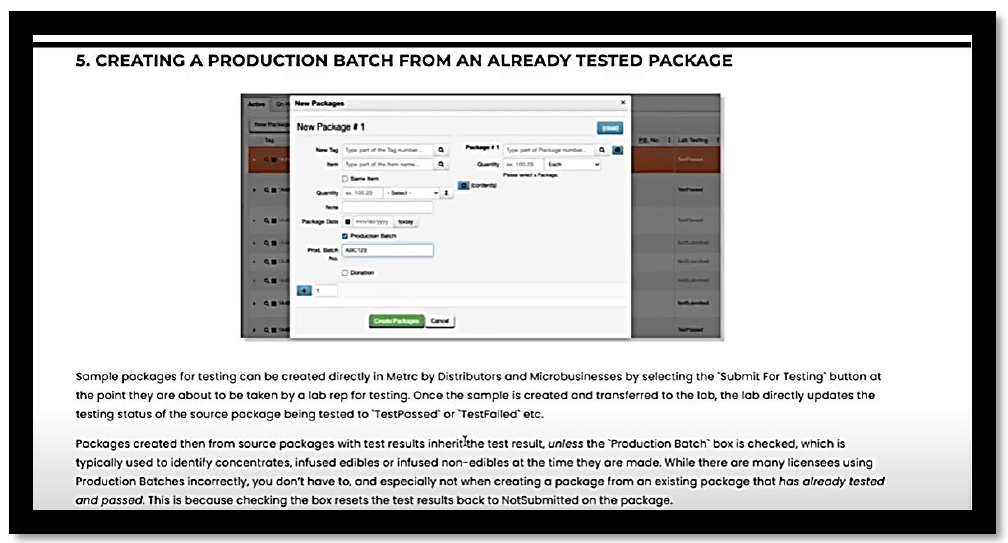
Packages created then from source packages with test results inherit the test result, unless the “Production Batch” box is checked, which is typically used to identify concentrates, infused edibles or infused non-edibles at the time they are made. While there are many licensees using Production Batches incorrectly, you don’t have to, and especially not when creating a package from an existing package that has already tested and passed. This is because checking the box resets the test results back to NotSubmitted on the package.
- There are diverse scenarios where a provider may wish to discontinue a package. Users can change the item the package belongs to by selecting Changing Item on the package within 24 hours of its creation.
NOTE: If a provider adjusts their packages too often, Metrc does note this on the account. The department has access to these reports and may violate the provider accordingly.
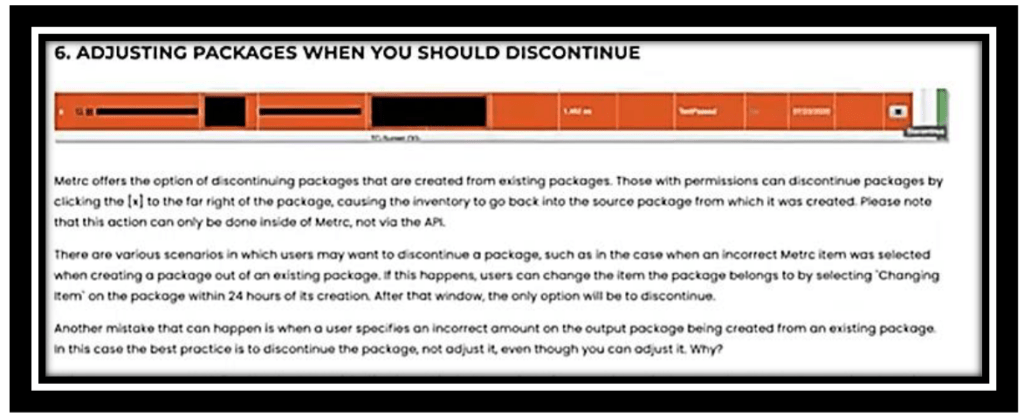
There are various scenarios in which users may want to discontinue a package, such as in the case when an incorrect Metrc item was selected when creating a package out of an existing package. If this happens, users can change the item the package belongs to by selecting ‘Changing item’ on the package within 24 hours of its creation. After that window, the only option will be to discontinue.
Another mistake that can happen is when a user specifies an incorrect amount on the output package being created from an existing package. In this case the best practice is to discontinue the package, not adjust it, even though you can adjust it. Why?